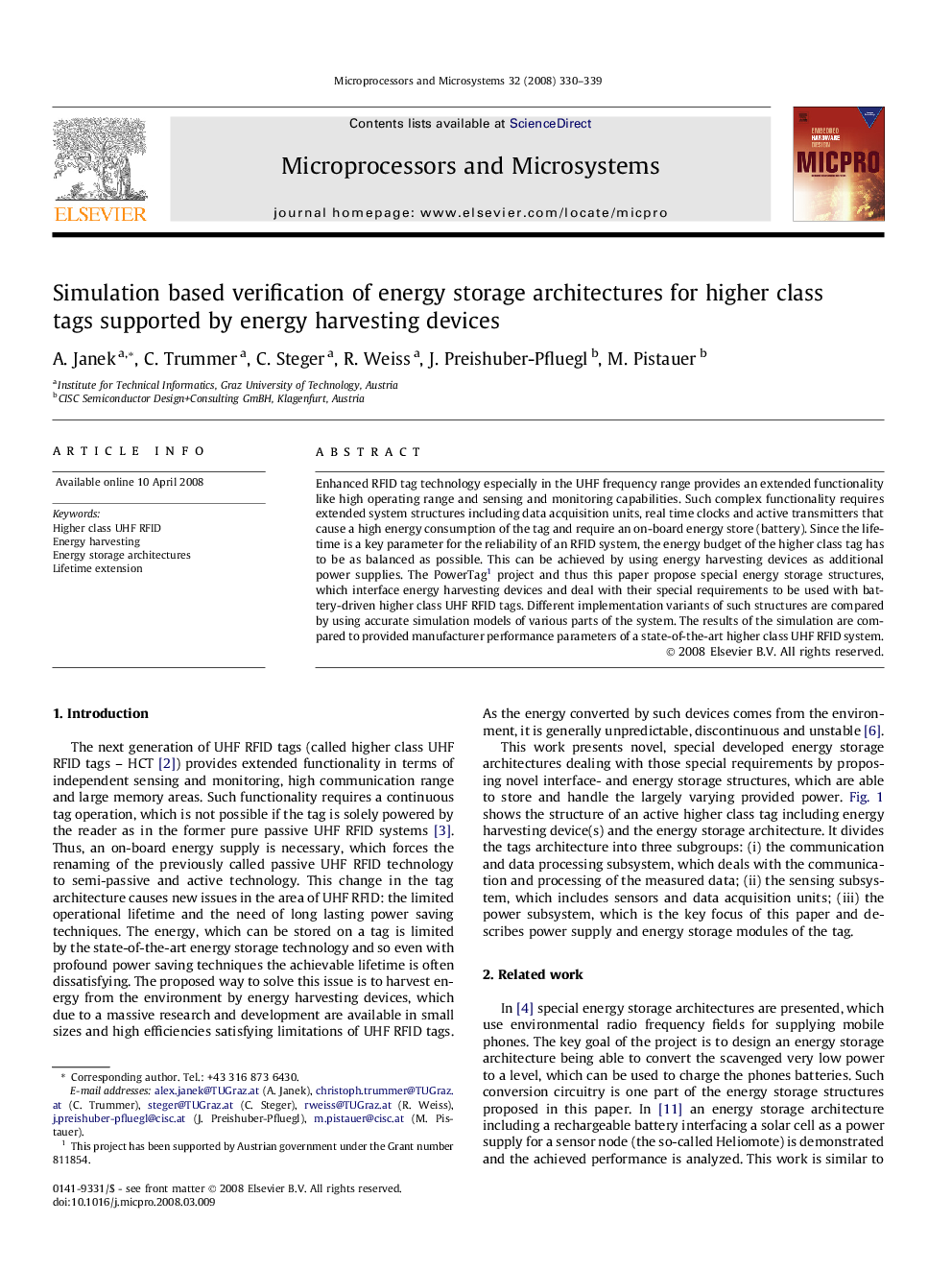| Article ID | Journal | Published Year | Pages | File Type |
|---|---|---|---|---|
| 463204 | Microprocessors and Microsystems | 2008 | 10 Pages |
Enhanced RFID tag technology especially in the UHF frequency range provides an extended functionality like high operating range and sensing and monitoring capabilities. Such complex functionality requires extended system structures including data acquisition units, real time clocks and active transmitters that cause a high energy consumption of the tag and require an on-board energy store (battery). Since the lifetime is a key parameter for the reliability of an RFID system, the energy budget of the higher class tag has to be as balanced as possible. This can be achieved by using energy harvesting devices as additional power supplies. The PowerTag1 project and thus this paper propose special energy storage structures, which interface energy harvesting devices and deal with their special requirements to be used with battery-driven higher class UHF RFID tags. Different implementation variants of such structures are compared by using accurate simulation models of various parts of the system. The results of the simulation are compared to provided manufacturer performance parameters of a state-of-the-art higher class UHF RFID system.
